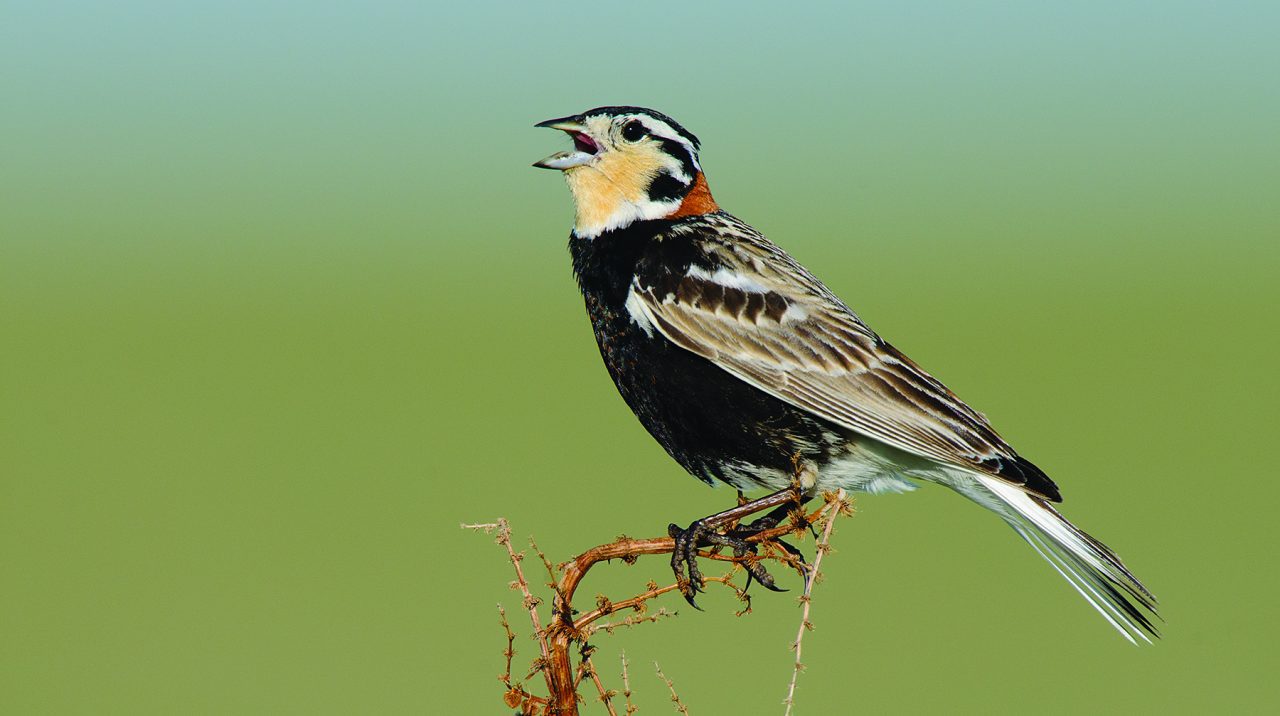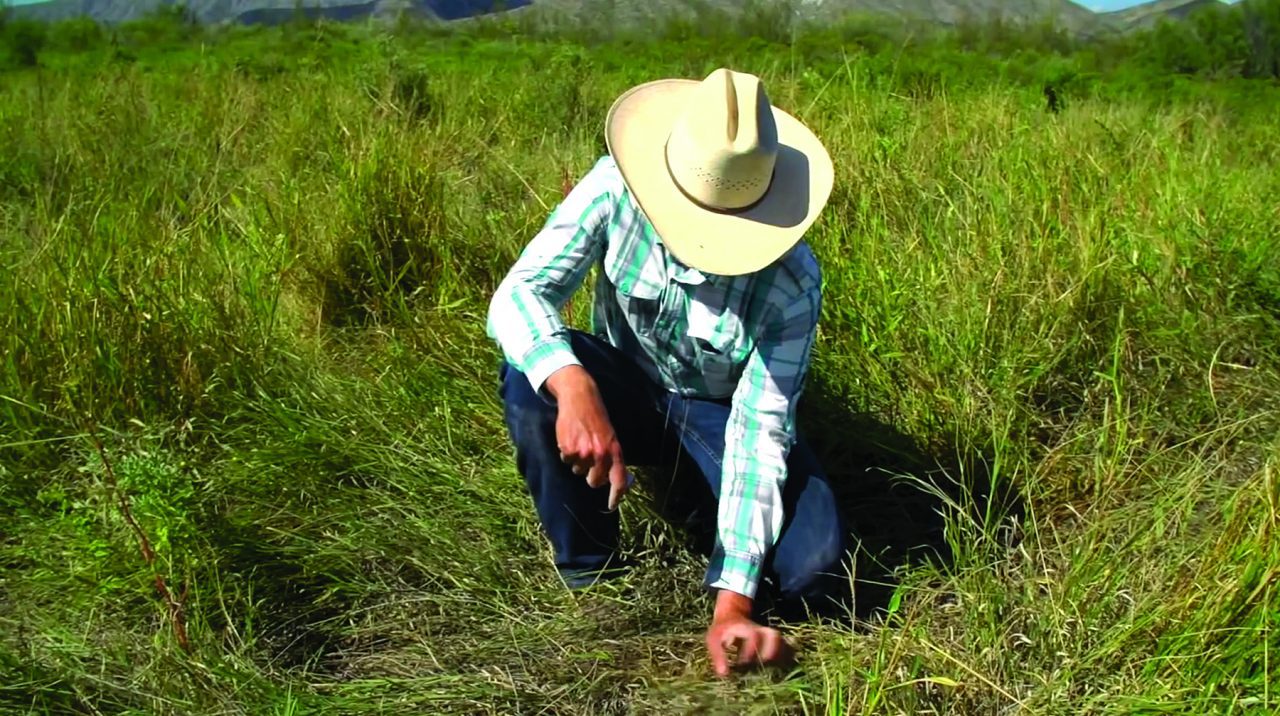Mexican Ranchers Buck Tradition to Save Grasslands and Wildlife
By Pat Leonard
From the Winter 2016 issue of Living Bird magazine.
Image courtesy of Cornell Lab Multimedia. January 26, 2016Golden-green grasses bent by the wind ripple to a dusky horizon rimmed with mountains. Beneath a brilliant blue Mexican sky, cattle chew placidly as vaqueros on horseback patrol nearby. It’s an idyllic scene, but it stands in sharp contrast to the struggle being waged to conserve the grassland beneath their feet—one of the most endangered habitats on earth.
These are the Chihuahuan grasslands, found scattered throughout the 175,000 square miles of the Chihuahuan Desert. Bits of grassland are found in extreme southeastern Arizona, southern New Mexico, and western Texas. But by far the largest portion lies in Mexico. The Chihuahuan grasslands are a shadow of what they once were, eroded by conversion to agricultural use and the creeping desert. All this has led to alarmingly steep declines among the approximately 30 species of birds that winter there.


“Migratory birds from Canada and the United States depend on Chihuahuan Desert grasslands during the nonbreeding season, which lasts up to 10 months,” says Arvind Panjabi, international program director for Bird Conservancy of the Rockies (formerly Rocky Mountain Bird Observatory). “These are the birds that nest in the Great Plains—sparrows, longspurs, and buntings. Sprague’s Pipit, Baird’s Sparrow, and Chestnut-collared Longspur are three grassland birds that are most sensitive to habitat loss on their wintering grounds.” The grasses provide food for the birds and protection from predators.
“The more diverse your wildlife the healthier your ranch and your ecosystem”
—Ángel Martínez
The destruction began when humans brought in cattle almost 500 years ago, which led to overgrazing as vast herds of these nonnative ungulates ate the grasses down to bare earth. Without the grasses, an aggressive front line of mesquite, creosote bush, and other tenacious scrub moves in. It’s called “desertification.” Without the grasses, cattle cannot survive either, so the ranchers hit rock bottom.
“I realized I was destroying an ecosystem,” says Mexican rancher Jesús Almeida. But Almeida and a group of other progressive ranchers are breaking with tradition. The Bird Conservancy of the Rockies is working with them on a different grazing strategy that not only preserves grasslands and wildlife, but also makes their businesses more profitable.
“The key is establishing a short-duration rotational grazing system,” explains Panjabi. Instead of letting cattle graze in the same pasture until all the grass is gone, some ranchers are now using small pastures for as little as a day or two and then moving the cattle to a new area. “This means that, on average, each pasture is only grazed for 8 to 10 days out of the year. The grasses get to rest,” Panjabi says. “In many respects, we’re trying to mimic the historic grazing patterns of the bison.”
Almeida says the grass cover on his ranch in the Mexican state of Chihuahua has increased by 60 to 80 percent. But is it working for the birds? It’s too early to tell because altered grazing and proactive scrub eradication have only been going on for a couple of years. The Bird Conservancy of the Rockies does have monitoring programs in place to see if bird populations rebound.


Chestnut-collared Longspur (pictured in breeding plumage) have declined by more than 80 percent since 1966, according to the North American Breeding Bird Survey, due in part to the loss of habitat on their grassland wintering grounds. Photo by Gerrit Vyn. 

Around the world, grasslands go by many names, including savanna, pampas, steppe, and prairie. But by any name it is one of the most endangered ecosystems on the planet, and its inhabitants are equally threatened. Image courtesy Cornell Lab Multimedia. 

When land is overgrazed, a process called desertification takes place, and the land is no longer useful for livestock grazing or as habitat for migratory birds. Photo by Tim Gallagher. 

Sustainable grazing is helping preserve grasslands but these areas remain under pressure from human development and conversion to farmland. Photo by Tim Gallagher. 

Alejandro Carrillo is among those breaking with ranching tradition to preserve the grasslands and his way of life by using short-term rotational grazing. Image courtesy Cornell Lab Multimedia.
“The impact should be seen fairly quickly at the site level, within one to five years,” says Panjabi. “But for these impacts to be noticeable range-wide, at the population level for grassland bird species, we need to greatly expand what we are doing, quickly, and prevent loss of additional grasslands.”


Unfortunately, grasslands remain under heavy pressure.
“We’ve measured the rate of agricultural expansion in parts of Chihuahua and it’s about 6 percent per year,” says Panjabi. He says that at the current rate, grasslands could be gone from the Valles Centrales region by 2025.
“Farmers target the grasslands because those areas have the best soil and easiest access to water,” he says.
The ranchers working with Bird Conservancy of the Rockies say that grasslands-friendly grazing just feels right.
“The more diverse your wildlife the healthier your ranch and your ecosystem,” says rancher Ángel Martínez.
“Working with nature gives you life,” affirms Enrique Baeza, another rancher. “That is what I feel.”


All About Birds is a free resource
Available for everyone,
funded by donors like you





